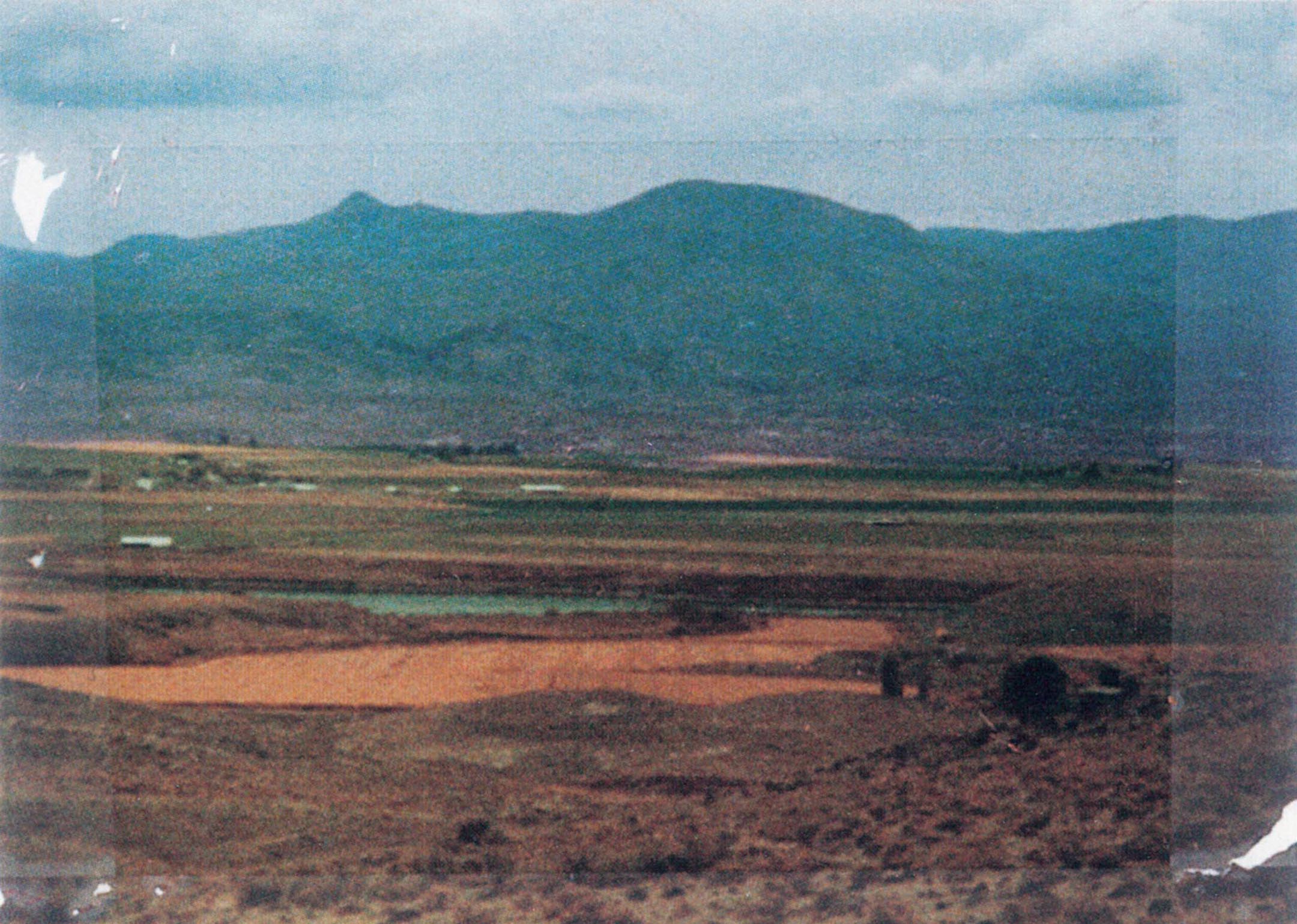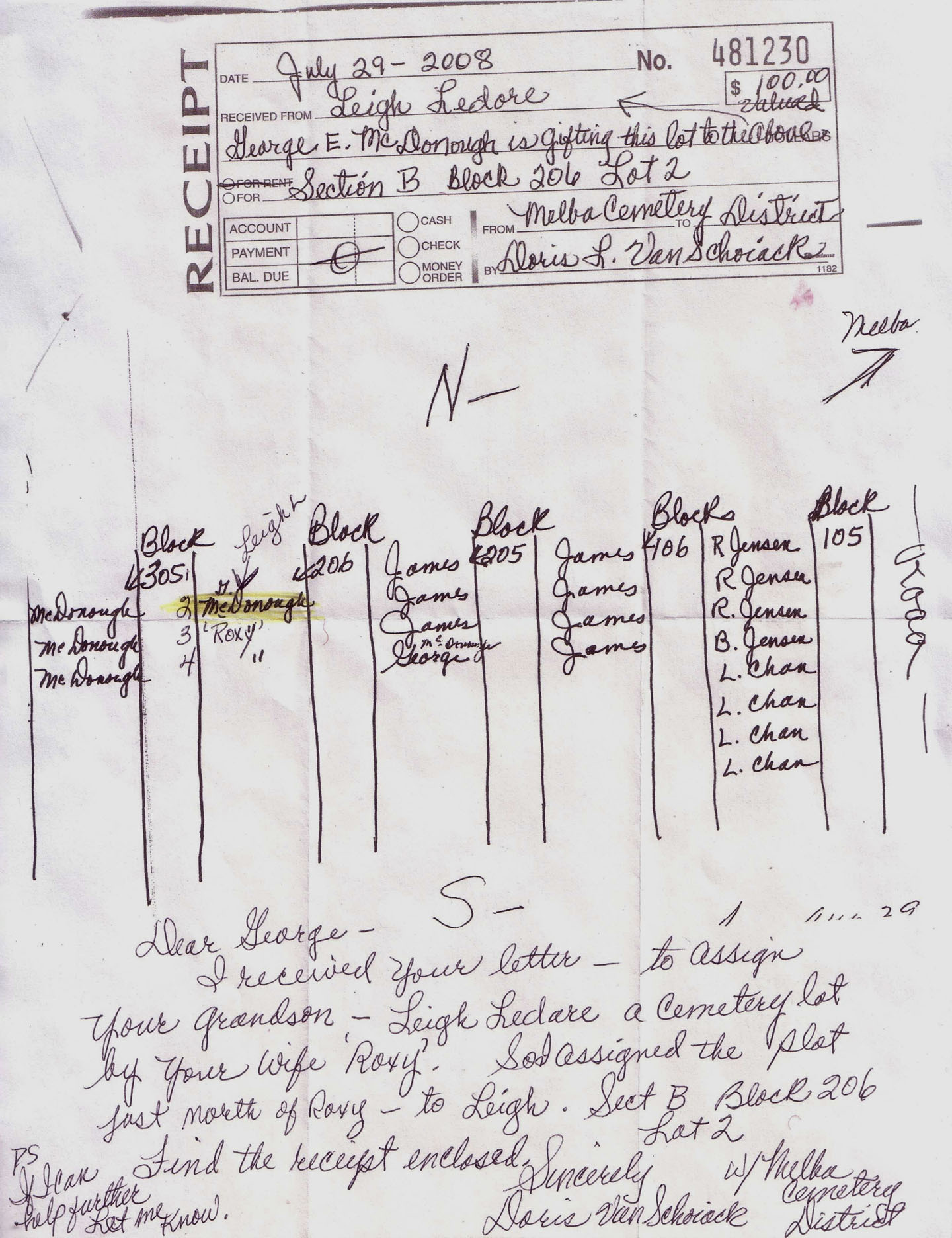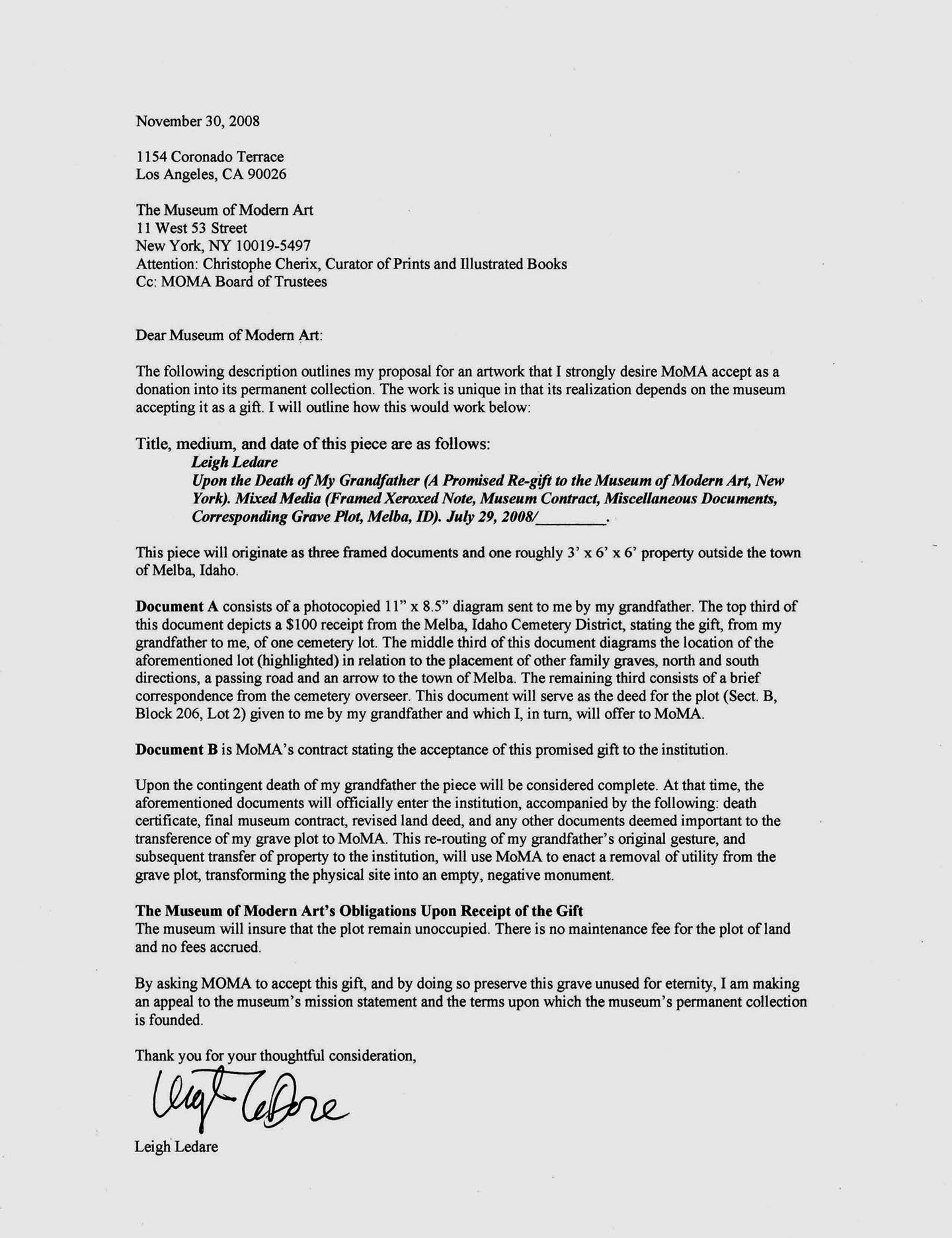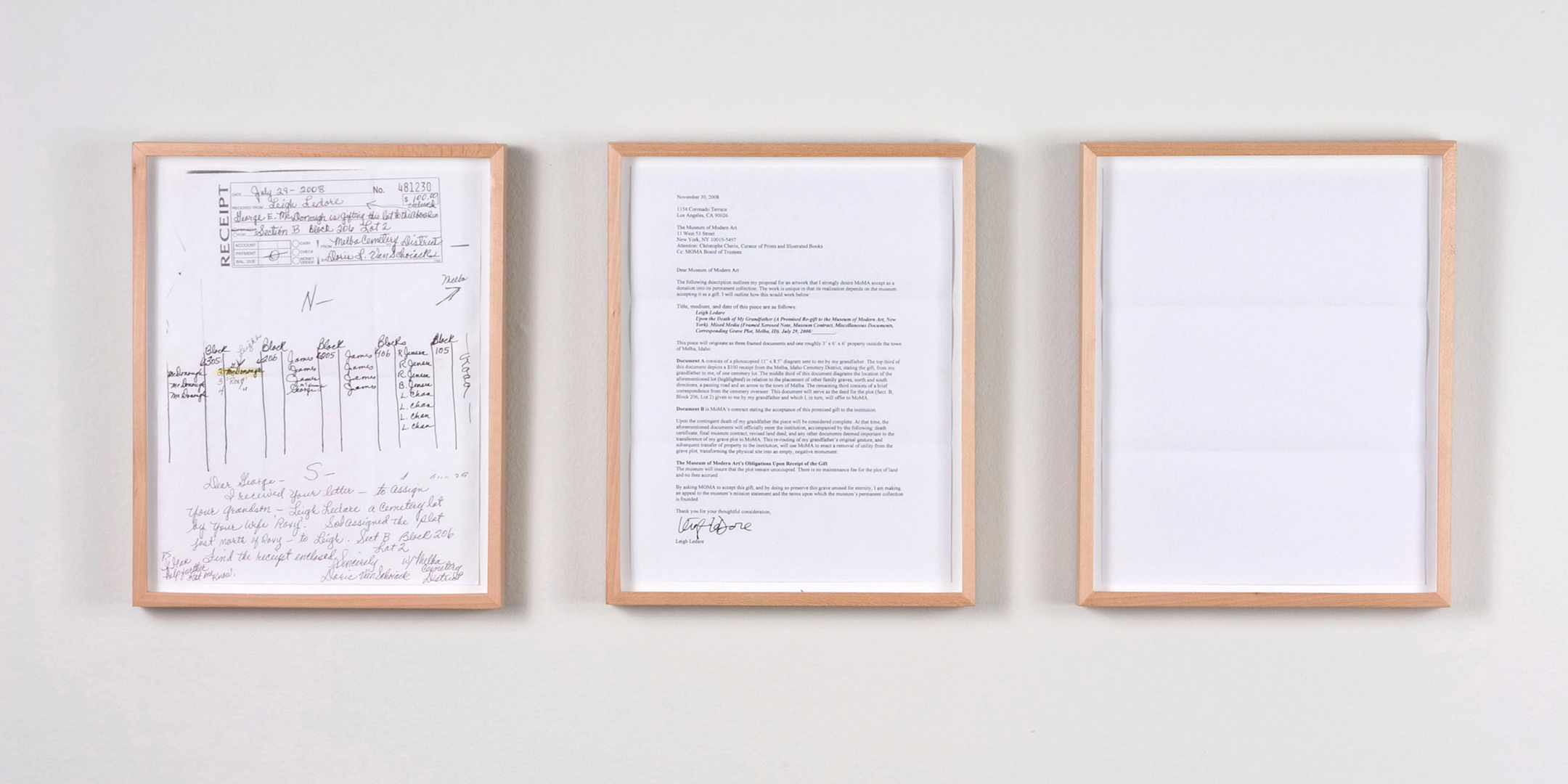MoMA Plot (2009)
Grave plot, xeroxed receipt, museum contract
(Final text pending)
At the origin of Upon the Death of My Grandfather (July 28, 2008 – August 17, 2011) is an unusual gift from the artist’s grandfather. Before his death, Ledare’s grandfather purchased a grave plot for each member of the family and gave the receipt and certificate of proof of the act as a gift to each of them. The gesture was an attempt to physically reunite the estranged members of a dysfunctional family in death; it was also a testament to the imminent death of the giver, as well as an insinuation of the eventual fate of each of the recipients. The artist responded, in a way, by refusing and turning the emotionally loaded gift on its head: he offered his empty plot to the Museum of Modern Art in New York as an artwork instead. Sitting somewhere between an earthwork sculpture and conceptual art piece, Ledare’s promised gift of a forever empty plot would take effect upon the death of his grandfather and from the moment that it enters the collection of the museum. The triptych of documents that make up the subsequent work – the grandfather’s original hand-written land lot memo and receipt, Ledare’s formal gift letter to the Museum of Modern Art, and a folded blank piece of paper, standing-in for the museum’s still absent reply – trace the complex familial, emotional, fiduciary, and institutional implications of the two acts. They also point to the relational and contractual premises that lie at the heart of all of Ledare’s work.
Grave plot, xeroxed receipt, museum contract
(Final text pending)
At the origin of Upon the Death of My Grandfather (July 28, 2008 – August 17, 2011) is an unusual gift from the artist’s grandfather. Before his death, Ledare’s grandfather purchased a grave plot for each member of the family and gave the receipt and certificate of proof of the act as a gift to each of them. The gesture was an attempt to physically reunite the estranged members of a dysfunctional family in death; it was also a testament to the imminent death of the giver, as well as an insinuation of the eventual fate of each of the recipients. The artist responded, in a way, by refusing and turning the emotionally loaded gift on its head: he offered his empty plot to the Museum of Modern Art in New York as an artwork instead. Sitting somewhere between an earthwork sculpture and conceptual art piece, Ledare’s promised gift of a forever empty plot would take effect upon the death of his grandfather and from the moment that it enters the collection of the museum. The triptych of documents that make up the subsequent work – the grandfather’s original hand-written land lot memo and receipt, Ledare’s formal gift letter to the Museum of Modern Art, and a folded blank piece of paper, standing-in for the museum’s still absent reply – trace the complex familial, emotional, fiduciary, and institutional implications of the two acts. They also point to the relational and contractual premises that lie at the heart of all of Ledare’s work.



